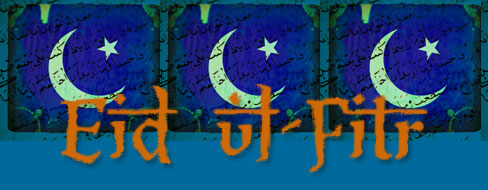Haifa Wahbi to star in tolerance music concert
For the third consecutive year, the city of Agadir will host the"Concert for Tolerance" on October 17th that seeks to promote the culture of tolerance and coexistence.
The concert, organized by the Association of Tolerance in partnership with Moroccan TV-2M and French TV channel M6, is a cultural bridge between the two Mediterranean shores chanting peace, fraternity and unity.
 Fans of Lebanese singer, Haifa Wahbi, will be thrilled she is attending. For a while it seemed the singer had lost interest in Morocco. Back in 2006 she spat the dummy and requested that her business manager cancel all trips to Morocco and to refuse all requests to hold concerts or interviews with the Moroccan press. At the time the problem was that she thought she was mistreated during a previous visit to Morocco. Haifa claims she was searched in an inappropriate manner by a female security officer at the airport. When Haifa asked why she was being mistreated, the officer said that she simply does not like her. Well, Haifa dear, not everyone is an adoring fan.
Fans of Lebanese singer, Haifa Wahbi, will be thrilled she is attending. For a while it seemed the singer had lost interest in Morocco. Back in 2006 she spat the dummy and requested that her business manager cancel all trips to Morocco and to refuse all requests to hold concerts or interviews with the Moroccan press. At the time the problem was that she thought she was mistreated during a previous visit to Morocco. Haifa claims she was searched in an inappropriate manner by a female security officer at the airport. When Haifa asked why she was being mistreated, the officer said that she simply does not like her. Well, Haifa dear, not everyone is an adoring fan.On previous visits Haifa Wahbi came with an invitation from the "Red Badge Organisation" to assist in the fight against AIDS. While some more conservative voices criticise her "dress sense", she has a strong following amongst younger people.
Road accidents killed ten people in northern Morocco
Morocco's run of road accidents continued this week with ten people killed and several others were seriously injured in two road accidents that occurred Sunday and Monday in northern Morocco.
Four people were killed and six were seriously wounded in an accident that occurred Sunday on a sea road linking the northern city of Al Hoceima to Nador. The accident was caused by a car that collided with two other vehicles running in the opposite direction. The injured were transferred to Al Hoceima's Hospital.
In the second accident, six people were killed and thirty-three were seriously injured on Monday when a bus crashed into a car in Tangier. The wounded were rushed to the city's hospital.
Fishing industry receives a boost.
This week two conventions were signed in Agadir to create a fish industry project for an amount of 6.6 billion dirhams (850 million US dollars).

The project named Haliopolis, whose signing ceremony was chaired by HM king Mohammed VI (pictured above), aims to create a regional competitiveness centre that rests on the concept of new generation integrated industrial parks that offer a diversity of services.
The project is due to create 20,000 jobs, including 13,000 direct opportunities, equipped land lots, and spaces for offices and for new businesses. The Haliopolis project has a capacity to process 500,000 tons of sea products, including 150,000 in relocated factories and 350,000 tons in on-site industrial units. It will be erected on an area of 150 hectares.
A company will be created to take charge of managing and developing the project. The conventions were signed by several cabinet ministers, local officials and the state fund (CDG).
This ambitious strategy aims at developing Morocco's halieutic resources and increasing by three-folds the sector's GDP by 2020 in a bid to make of the fisheries the driving force of the Kingdom's national economy.
This new plan is also destined to create up to 115,000 jobs and increase the value of sea products exports to over $ 3.1 billion by 2020 against $ 1.2 Billion in 2007. This fresh strategy will help carry out several fish processing projects and set up three competitiveness poles in Tangier, Agadir and Laayoune-Dakhla for an investment of 9 billion dirhams.
University professor arrested over student's death
A police probe conducted following the discovery Saturday on campus of a student's body led to the arrest of the victim's professor and supervisor.
An autopsy has revealed that the 27-year-old postgraduate, who was preparing her PhD in oceanography at Agadir's Ibn Zohr University, was strangled to death.
The accused will be brought before Agadir's Appeal Court.
Interior Ministry sues "Akhbar Al Youm" daily
The Moroccan Interior ministry decided Monday to sue Moroccan Arabic-language daily "Akhbar Al Youm" for having published a cartoon on a private wedding ceremony organized by the royal family.The cartoon, published September 26-27, 2009 by the daily, is a "blatant disrespect to a member of the royal family," said a statement by the Ministry on Monday.
"In addition to tendentiously using the national flag, the cartoon undermines a symbol of the Nation by insulting the emblem of the Kingdom," the statement said, adding that "the use of the Star of David in the cartoon raises many questions on the insinuations of the people behind it and suggests flagrant anti-Semitic penchants."
"In light of the elements at hand, the Interior Minister has decided, in accordance with the laws in force, to sue and seize the daily, and to take the appropriate measures concerning the paper's equipment and premises," the document said.
In the same vein, Prince Moulay Ismail has decided to take legal action concerning this issue.
French serial 'Plus belle la vie' to be shot in Morocco in October
The highly successful French serial "Plus belle la vie" (More Beautiful Life) will be shot in the Moroccan southern cities of Ouarzazate, Agadir and Zagora between October 7-24, the French weekly "TV Magazine" announced.
"Plus belle la vie", watched every evening on "France 3" by around 4 million people, tells the daily life of the (imaginary) neighbourhood of Mistral in the south of France.
This free-music event will include other world popular artists and singers, such as Diam's, Bob Sinclar, Leona Lewis, Tokio hôtel, Marc Lavoine, Florent Pagny, Natalie Imbruglia, Renan Luce, and Faudel.
The annual concert, to be aired live by TV channels: 2M, M6, M6 Music Hits, RTL, W9 and TV5 Monde, is expected to attract some 200,000 music lovers.
The annual concert, to be aired live by TV channels: 2M, M6, M6 Music Hits, RTL, W9 and TV5 Monde, is expected to attract some 200,000 music lovers.
Road accidents killed ten people in northern Morocco
Morocco's run of road accidents continued this week with ten people killed and several others were seriously injured in two road accidents that occurred Sunday and Monday in northern Morocco.
Four people were killed and six were seriously wounded in an accident that occurred Sunday on a sea road linking the northern city of Al Hoceima to Nador. The accident was caused by a car that collided with two other vehicles running in the opposite direction. The injured were transferred to Al Hoceima's Hospital.
In the second accident, six people were killed and thirty-three were seriously injured on Monday when a bus crashed into a car in Tangier. The wounded were rushed to the city's hospital.
Fishing industry receives a boost.
This week two conventions were signed in Agadir to create a fish industry project for an amount of 6.6 billion dirhams (850 million US dollars).

The project named Haliopolis, whose signing ceremony was chaired by HM king Mohammed VI (pictured above), aims to create a regional competitiveness centre that rests on the concept of new generation integrated industrial parks that offer a diversity of services.
The project is due to create 20,000 jobs, including 13,000 direct opportunities, equipped land lots, and spaces for offices and for new businesses. The Haliopolis project has a capacity to process 500,000 tons of sea products, including 150,000 in relocated factories and 350,000 tons in on-site industrial units. It will be erected on an area of 150 hectares.
A company will be created to take charge of managing and developing the project. The conventions were signed by several cabinet ministers, local officials and the state fund (CDG).
This ambitious strategy aims at developing Morocco's halieutic resources and increasing by three-folds the sector's GDP by 2020 in a bid to make of the fisheries the driving force of the Kingdom's national economy.
This new plan is also destined to create up to 115,000 jobs and increase the value of sea products exports to over $ 3.1 billion by 2020 against $ 1.2 Billion in 2007. This fresh strategy will help carry out several fish processing projects and set up three competitiveness poles in Tangier, Agadir and Laayoune-Dakhla for an investment of 9 billion dirhams.
University professor arrested over student's death
A police probe conducted following the discovery Saturday on campus of a student's body led to the arrest of the victim's professor and supervisor.
An autopsy has revealed that the 27-year-old postgraduate, who was preparing her PhD in oceanography at Agadir's Ibn Zohr University, was strangled to death.
The accused will be brought before Agadir's Appeal Court.
Interior Ministry sues "Akhbar Al Youm" daily
The Moroccan Interior ministry decided Monday to sue Moroccan Arabic-language daily "Akhbar Al Youm" for having published a cartoon on a private wedding ceremony organized by the royal family.The cartoon, published September 26-27, 2009 by the daily, is a "blatant disrespect to a member of the royal family," said a statement by the Ministry on Monday.
"In addition to tendentiously using the national flag, the cartoon undermines a symbol of the Nation by insulting the emblem of the Kingdom," the statement said, adding that "the use of the Star of David in the cartoon raises many questions on the insinuations of the people behind it and suggests flagrant anti-Semitic penchants."
"In light of the elements at hand, the Interior Minister has decided, in accordance with the laws in force, to sue and seize the daily, and to take the appropriate measures concerning the paper's equipment and premises," the document said.
In the same vein, Prince Moulay Ismail has decided to take legal action concerning this issue.
French serial 'Plus belle la vie' to be shot in Morocco in October
The highly successful French serial "Plus belle la vie" (More Beautiful Life) will be shot in the Moroccan southern cities of Ouarzazate, Agadir and Zagora between October 7-24, the French weekly "TV Magazine" announced.
"Plus belle la vie", watched every evening on "France 3" by around 4 million people, tells the daily life of the (imaginary) neighbourhood of Mistral in the south of France.







































